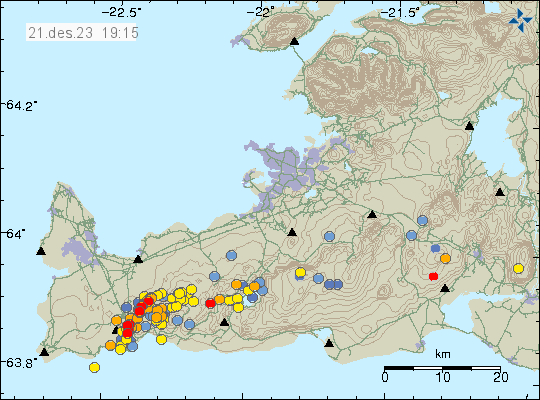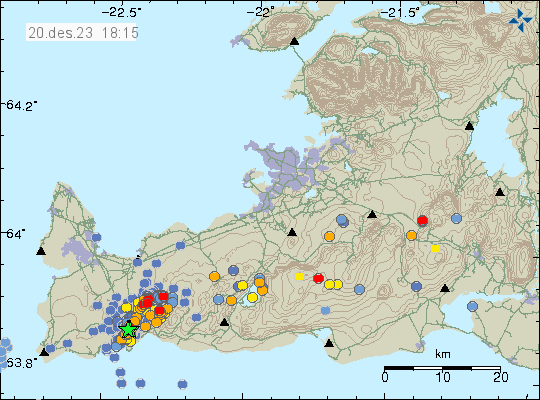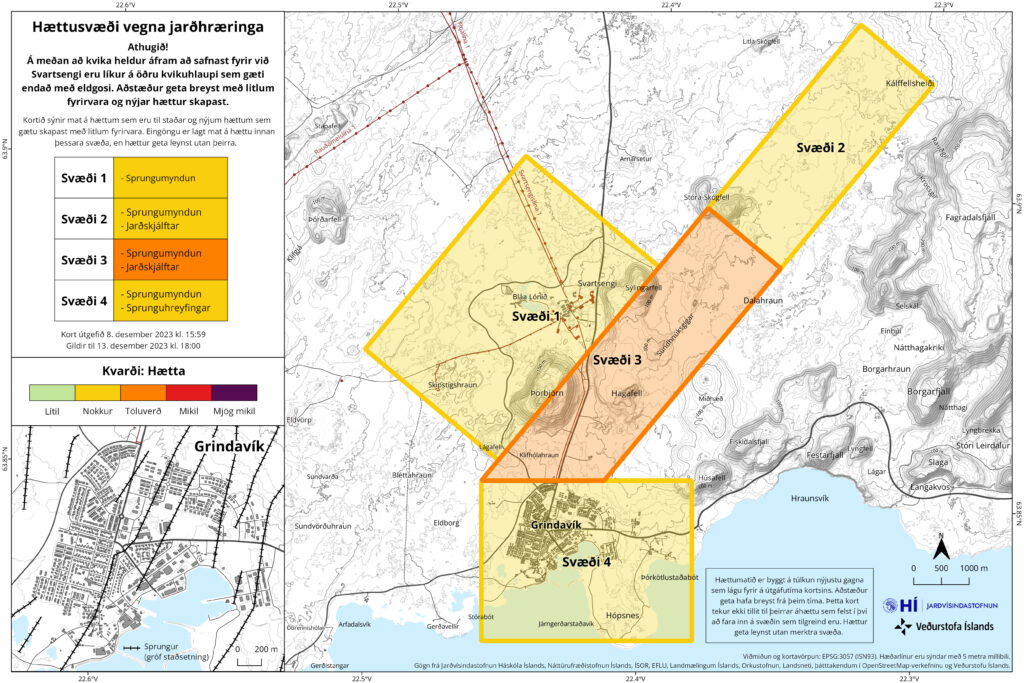This is a short article, written on 21. December 2023 at 18:47 UTC. Information here might go outdated quickly and without warning.
The eruption that started on 18. December 2023 at 22:17 UTC is over, best I can see. This was large eruption, but a short one. Total lava flow covered an area of 3,7 km2 (square kilometre). Most of the eruption happened in the first 24 – 48 hours of the eruption. There are early indicators that inflation has resumed in Svartsengi volcano, if it inflates at the same rate as before this eruption it is only going to take 8 to 10 days until next eruption. This is a big question since there’s a lot of magma in Svartsengi volcano and that magma can move towards the surface, even if the inflation doesn’t happen and can result in a larger eruption. If that happens is a wait and see situation.
Videos from the eruption areas show a lot of degaussing in the eruption fissure. This is interesting and I am not sure why that is. There’s a chance a lot of magma is in the dyke that is just releasing gas into the air without having the energy to erupt. There’s a small chance that a new eruption might happen in the same location. If that happens is impossible to know.

This earthquake activity is interesting, it started yesterday (20. December 2023). This follows the same pattern as the earthquake activity before the start of the eruption on 18. December. If that is what is happening remains a wait and see situation for now.
This is the last update unless something happens in this area. Based on current information, that is what is going to happen, the question is just when.




